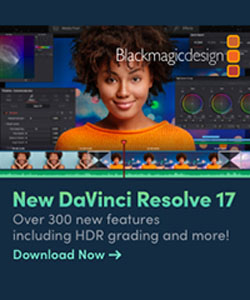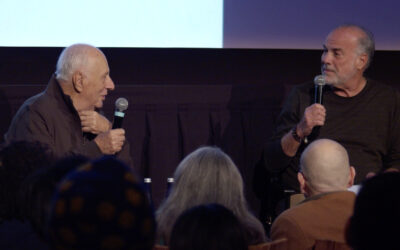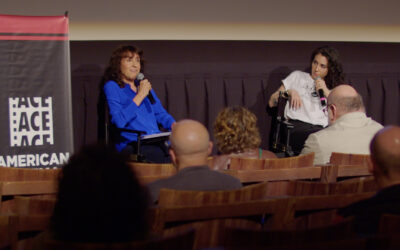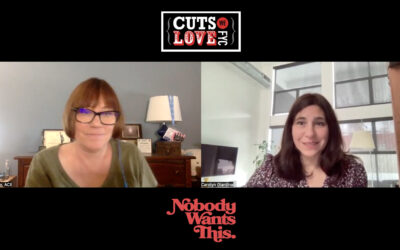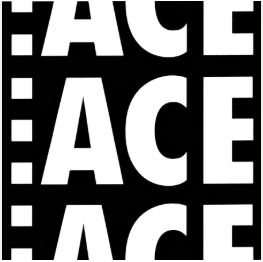About ACE | Articles | CinemaEditor Magazine | Events | Interviews | Technology | Videos
December 8, 2020


More than 800 registrants representing 20 countries participated in ACE’s wildly-successful first EditFest Global – a virtual EditFest event, held from Aug. 29- 30, in response to circumstances related to COVID- 19, which prompted the cancellation of the 2020 EditFest London and EditFest L.A. events.
 Hosted by ACE President Stephen Rivkin, ACE, the event additionally launched the new EditFest Global website (EditFestGlobal.com), an online resource for events and other content and information for the editing community. This will include past EditFest presentations, moderated panels sponsored by studios, streamers and networks, journalist-led discussions, content from our global partners and technical information and tutorials on important products. Membership in EditFest Global is open to all and free to ACE members.
Hosted by ACE President Stephen Rivkin, ACE, the event additionally launched the new EditFest Global website (EditFestGlobal.com), an online resource for events and other content and information for the editing community. This will include past EditFest presentations, moderated panels sponsored by studios, streamers and networks, journalist-led discussions, content from our global partners and technical information and tutorials on important products. Membership in EditFest Global is open to all and free to ACE members.
The EditFest virtual event featured Terilyn A. Shropshire, ACE, in a conversation with Inside the Cutting Room’s Bobbie O’Steen. Shropshire’s credits include When They See Us, Secret Life of Bees, Love & Basketball and the recent Netflix hit The Old Guard, based on the comic book series and directed by longtime collaborator Gina Prince-Bythewood.
Shropshire explained how she had to convince Netflix she was the right choice to edit the action movie. “I feel that I’ve clearly proven I know what I’m doing but there is this reluctance among all studios to believe you can do it. I’ve worked over many years in many genres but what happens is people narrow those films down to what they would describe as black film. The truth of the matter is, editors are artists and we are always honing our skills. So, when I went in to meet [with] Netflix the question about whether I could cut an action film did come up. But before I’d crossed that threshold into the meeting my headspace was ‘why would you not hire me?’ I need to educate you why I should be the one. I’m used to it.”
Shropshire also talked about the need to make the very best film you can each time whether that’s for a first-time director or a seasoned one. “Sometimes you only get that one chance,” she said. “Failure is not an option. You are working together to get it right, so that you have the opportunity to do others. There is definitely a pressure to make sure it’s the best film it could be. When we make films we don’t have that luxury to not get it right. That’s what keeps us pushing and pushing.”
 Panels included a look at animation editing and conversations about advancing from intern to editor. They also included “You Gotta Watch This Bit,” an homage to the “Lean Forward Moment” panels conceived and moderated by the late Norman Hollyn, ACE. Ant Boys, ACE (The Great), led the discussion about the films and TV shows that influence and inspire.
Panels included a look at animation editing and conversations about advancing from intern to editor. They also included “You Gotta Watch This Bit,” an homage to the “Lean Forward Moment” panels conceived and moderated by the late Norman Hollyn, ACE. Ant Boys, ACE (The Great), led the discussion about the films and TV shows that influence and inspire.
Speakers included Kabir Akhtar, ACE (Never Have I Ever – director, Crazy Ex-Girlfriend editor/director); Maryann Brandon, ACE (Star Wars: The Rise of Skywalker); Kelley Dixon, ACE (Better Call Saul); William Goldenberg, ACE (Argo); and Jacques Gravett, ACE (Battlestar Galactica). In moderating the conversation,
Boys urged the audience “to be an excited fan” of the work in order to create these memorable cuts. Akhtar showed and discussed the shocking ending to 1995 thriller The Usual Suspects, edited by John Ottman, ACE. “The storytelling is told completely through the editing,” he said of how the mysterious Keyser Soze’s identity is revealed. Brandon showed a clip from classic ‘60s sci-fi series The Outer Limits, citing its simplicity. “What I love about it, is there are no fancy tricks. It’s very straightforward.”
Dixon introduced a scene from Steven Zaillian’s 1993 drama Searching for Bobby Fischer, edited by Wayne Wahrman, ACE, during which a young Fischer plays chess with his father. “We understand that he is going to win, but we don’t know how it’s going to be revealed to us,” she said. “Anytime you can surprise your audience … even if they know what’s going to happen, that’s a huge win.” Goldenberg introduced the final scene from Charlie Chaplin’s City Lights (1931), in which the Little Tramp has fallen in love with a blind woman. He described the ending of the nonverbal movie as a “beautifully emotional clip” that portrays “selflessness, not caring about class structure and really seeing someone. … It’s loaded with so much emotion.”
Turning the conversation to Tony Scott’s 1995 thriller Crimson Tide, edited by Chris Lebenzon, ACE, Gravett chose the clash between officers played by Gene Hackman and Denzel Washington over whether their submarine should launch a missile attack. “It still gives me chills,” he said. “These are two actors at the top of their game. No camera tricks.” He added that while its dialogue-heavy, “just look at the expressions. It’s all about what’s happening in their eyes. … The challenge is, when do you cut. The performances are so good.”
Moderated by Adobe’s Margot Nack, “From Intern to ACE: Building a Future” featured Amelia Allwarden (Little Fires Everywhere, Pen15); Alfonso Carrion (House of Cards – assistant editor); Mark Hartzell, ACE (Lost in Space); Melissa McCoy (Whiskey Cavalier); and Gretchen Schroeder (Avatar 2 – assistant editor).
Each panelist screened a clip and talked through it. Introducing Pen15, Allwarden said, “I love this show because I felt like I exercised every different type of editing from documentary and improv to heartbreaking drama and comedy.” Hartzell picked Sacred Lies, “The Singing Bones” made by Blumhouse for Facebook Watch. He explained how he built the drama using unscripted dissolves, VFX and B-roll and how it became the showrunner’s favorite scene.
Carrion showed a clip from The Dark of the Night, a short film he edited for Robin Wright, pointing out manipulations of the audio, the frame and the use of “a no-good out take” to pull it off. A clip from the short Push, co-directed by ACE Internship Program co-director Carsten Kurpanek, was selected by Schroeder. She edited the piece having been mentored by Kurpanek during her internship.
 “When I was in the process of cutting I remember showing him the opening sequence and he loved it. It was the first time from any mentor I [received] that sort of feedback. It still sticks with me how valuable that mentor experience was.” Mentoring was also on the mind of McCoy who highlighted a scene from Apple TV+ soccer-comedy Ted Lasso. “I recall my mentor saying,‘You gotta be ready to do the job when you get into the chair,’ and this series was the epitome of that. There were so many different storylines to keep up with. Plus, there were a lot of invisible greenscreen VFX elements involving the on-field action that needed attention to detail.”
“When I was in the process of cutting I remember showing him the opening sequence and he loved it. It was the first time from any mentor I [received] that sort of feedback. It still sticks with me how valuable that mentor experience was.” Mentoring was also on the mind of McCoy who highlighted a scene from Apple TV+ soccer-comedy Ted Lasso. “I recall my mentor saying,‘You gotta be ready to do the job when you get into the chair,’ and this series was the epitome of that. There were so many different storylines to keep up with. Plus, there were a lot of invisible greenscreen VFX elements involving the on-field action that needed attention to detail.”
“Animation Editing: Inside Look at the Unique Storytelling Process” explored how the animation editing process differs from other genres. Jeff Draheim, ACE, explained it’s almost the exact opposite of live action. “In live they shoot all the footage and give it to the editor at the end to put it together. In animation we spend years putting it up on reels – rough storyboard, rough FX, rough dialogue – just trying to figure out what movie we’re trying to make. Once we figure it out then we go into production and actually start animating. It’s a much longer process but it’s also rewarding because you really get to roll up your sleeves and sink your teeth into it.”
Illustrating the storytelling process, Draheim showed and discussed a clip from his latest movie, Disney’s Frozen 2. Additional panelists presented work from each of their films. Catherine Apple, ACE, discussed Pixar’s Onward; Joyce Arrastia, ACE, featured DreamWorks Animation’s Rise of the Guardians; Sim Evan-Jones, ACE, presented the opening of Aardman Animations’ A Shaun the Sheep Movie:
Farmaggeddon; and Benjamin Massoubre, ACE, presented I Lost My Body.
Moderated by Carolyn Giardina, Tech Editor at The Hollywood Reporter, the editors also discussed working from home amid COVID-19.
Apple shared that the studio is recording actors from their bedroom closets as the most soundproofed socially-distant room. “We sent them all a mic and they are doing dialogue in their closet. It’s interesting to see how they have their places set up!” Massoubre has been working on two productions during lockdown, each with different remote arrangements. “With one I go to the studio and work on the animatic with the director. Both of us are tested and in a bubble. The other is at the animation stage and I’m cutting entirely from home. I’m about to start a new movie where ideally, we’d meet to brainstorm ideas. We’re trying to work out how best to do that virtually.”
Like most editors, Draheim found the early stages of quarantine hard, particularly with home internet connectivity. “If my kids are playing Xbox I could tell. Sometimes I’d get up at 5 a.m. just to get free open bandwidth. Even when all Disney editors are on the server at the same time the sync can struggle but it is getting better and Disney and Pixar are coming up with new ways to stabilize the workflow.”
Evan-Jones found aspects of the new normal more productive than before. “We have a 9:15 a.m. Zoom meeting every day and with everyone including assistants. Logistically that never happened before. Now everyone has really clear daily instructions.” Arrastia also finds communication improved with remote interaction. “We use hangouts to simulate team collaboration and Evercast for over-the-shoulder sessions. I prefer it because it feels less nerve-wracking than someone actually being present. Of course, I miss human interaction but in a weird way WFH has been more efficient and a much better work-life balance.”
EditFest Global presented plenty of opportunities to interact with other editors. Each day, attendees were invited to participate in breakout sessions with editors including Shannon Baker-Davis, ACE; Debbie Berman, ACE; Andrew Buckland, ACE; Aaron Butler, ACE; Poppy Das, ACE; Dody Dorn, ACE; Jeffrey Ford, ACE; Terel Gibson, ACE; Catherine Haight, ACE; Mark Helfrich, ACE; Niven Howie, ACE; Kate Sanford, ACE, and Gary Levy, ACE; Sabrina Plisco, ACE; Fred Raskin, ACE; Tatiana Riegel, ACE; Joan Sobel, ACE; Kevin Tent, ACE; Troy Takaki, ACE; Harry Yoon, ACE; and Julia Wong, ACE. Additionally, a ‘networking’ feature in the EditFest Global platform (think virtual speed dating) enabled participants to meet old and new colleagues for one-on-one conversation.
In short, you could come away from the program saying that you ‘met someone new’ at EditFest.
The program included breakout conversations with representatives from Blackmagic Design, Adobe, Avid, Netflix and Motion Picture Editors Guild. EditFest London and EditFest LA are slated to return in 2021. EditFest Global was presented with the generous support of Platinum sponsor Blackmagic Design; Gold sponsors Adobe, Avid, Ignite, Motion Picture Editors Guild and Netflix; and Silver sponsors Amazon and HBO.
Featured in Content:
ACE Board Message
FEATURES
Death on the Nile
Hillbilly Elegy
Ted Lasso
Tenet
Trial of Chicago 7
EDITOR’S CUT
EditFest Global Debut
Internship Goes Virtual
STOCK FOOTAGE
Aspects of Editing
Tech Corner
Where the World is Going
Cuts We Love
Related Content
ACE Presents “Dirty Rotten Scoundrels”
AMERICAN CINEMA EDITORS PRESENTS... American Cinema Editors Presents: Stephen Rotter discussing the editing of Dirty Rotten Scoundrels. Moderated by Jeffrey Wolf, ACE. The Q&A followed a screening of the film at Metrograph, New York, February 28, 2025 Credits:...
ACE Presents “Chinatown”
AMERICAN CINEMA EDITORS PRESENTS... American Cinema Editors Presents: Bobbie and Molly O’Steen discussing Sam O’Steen’s editing of the 1974 film Chinatown. The Q&A followed a screening of the film at Metrograph, New York, April 26, 2025 Credits: Directors of...
Cuts We Love: “Nobody Wants This”
"Nobody Wants This" Interview by Carolyn Giardina with Maura Corey, ACE, editor of Nobody Wants ThisMore...Explore Your Favorite TopicsEditFestTechnologyInterviewsMoviesNews A short excerpt from the ‘Virtual Glass of Wine’ British Film Editors interview series. David...
Explore Your Favorite Topics
EditFest
Technology
Interviews
Movies
News
A short excerpt from the ‘Virtual Glass of Wine’ British Film Editors interview series. David Fairhead BFE talks about the emotions working in the cutting room.
A short excerpt from the ‘Virtual Glass of Wine’ British Film Editors interview series. David Fairhead BFE talks about the emotions working in the cutting room.
A short excerpt from the ‘Virtual Glass of Wine’ British Film Editors interview series. David Fairhead BFE talks about the emotions working in the cutting room.
A short excerpt from the ‘Virtual Glass of Wine’ British Film Editors interview series. David Fairhead BFE talks about the emotions working in the cutting room.
CinemaEditorMag
Television
Editors On Editing
International
All Videos

